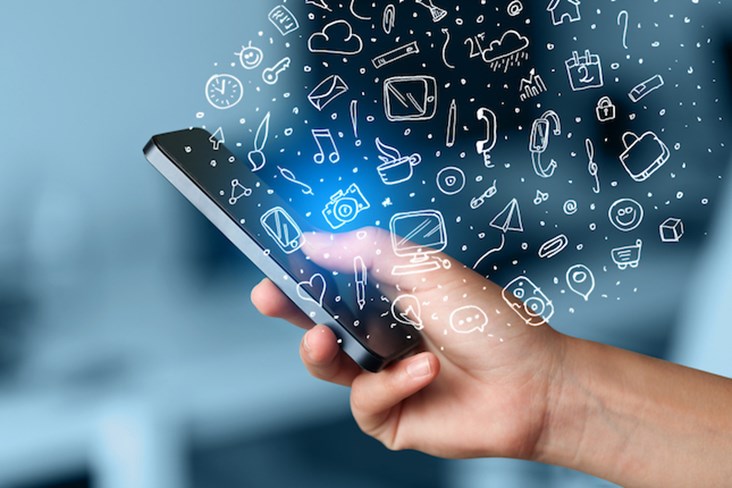
By Vineet Singla, General Manager of New Business and Director of Product, dubizzle
There are almost 2.5bn smartphones on earth. Smartphone apps occupy close to 60% of all time spent online, while time spent on desktop computers is declining.
The mobile phone user base in the Middle East and Africa (MEA) sits in second place to that in Asia-Pacific, with the UAE retaining its regional standing as having the highest per capita mobile phone penetration estimated at 80.6 per cent of the population and going up to 82.8 per cent by 2019.
Powered by the intense computational power of the cloud, massive scale and access to user data, mobile applications are becoming ever smarter. Technology is becoming increasingly commoditized with supply of ready off-the-shelf components and platforms, enabling new business models to pop-up quickly. All this access and scale has created opportunity for millions of app developers to deliver services and capture value. However, the challenge is the finite amount of time share that the user can give to any single app. Competitive advantage will come from innovation in user experience, rather than from building new technology components.
Although smartphone apps dominate the time spent online, app downloads have become virtually zero in the USA. Product differentiation on mobile is much harder with millions of apps to compete against. Out of over two million apps in different app stores, only a few thousand own 90% of time spent on mobile.
Every day, an average of 10,000 new apps are launched - a typical app gets less than 10% sign-ups from new users. It is no surprise that grabbing time share of users is going to be a challenge and retention can be very disappointing, depending on the nature the app. Usually there is a very steep drop of active users in the first week. Other than the top 10 apps in any app store, most apps will lose 77% of their users within the first three days and 90% within the first 30 days. By day 90, most apps will have lost 95% of their users. Contrast this with the top 10 apps that retain around 50% of their users after 90 days as per mobile analytics firm Quettra (owned by SimilarWeb).
This can be attributed to consumers becoming more impatient and disinterested in the average app. As the cost of downloading an app remains stubbornly high, users tend to download only the most commonly used apps, and an even smaller percentage are willing to stick around to use them often. Only around 5% of total users are active on any given day. Companies are now forced to move away from focusing on acquisition to focusing on retention, with more emphasis on sophistication and personalization of user experience. Rule of thumb says that it costs 5 times less to retain a user than acquire a new one.
What might be driving this difference?
The hardest part comes right after the app install. For most apps, 86% of new users never return after the initial download, and 20% of users abandon the app after their first use. While acquiring new app users may feel awesome, activating them should be the most vital priority for any mobile-first business. As soon as you capture new app users, you need to ensure their first use will make them come back for more, again and again. Anything above 10% of app users visiting daily should be the desired outcome.
The best way to grow retention is to target the first three days of usage, what we call on-boarding. It's the time when users first gain the value you promised to them. It is three times more effective to retain users by getting them to complete the first action soon after download than sending spammy emails and push notifications. It’s important to understand how they experience the app, what features they use and how frequently they visit. Chances are high that they opt out of notifications, unsubscribe to emails or just delete the app entirely if the experience falls below their expectations.
So how do we counteract this effect? Here are some tips to consider:
- Personalise the on-boarding experience by understanding your user’s interests and desires
- Introduce the key features of the app early through useful tooltips; teaching them how to interact with these features using hotspots, in-app messages and product tours
- Drive them faster towards taking the "first action" and receiving the promised benefit
- Help them to reach their “Aha!” moment early in the activation journey
One of the ways we activate buyers in dubizzle is by notifying them whenever new ads become available for their saved searches. This personalisation feature allows buyers to save their search criteria from the app listings screen and then sit back and relax. The app will notify them whenever there are fresh ads available that they might like to check out and contact the seller before other buyers do.
At dubizzle, our app has consistently ranked as the No. 1 lifestyle app in Apple iTunes and Google Play stores. App retention is 40% on day 1, and 18% on day 7. Every day 15% of the user base visits the app to checkout properties, cars, jobs, services and general goods.
All apps that understand the power of early activation reward their users by removing roadblocks in the user experience. Optimizing the on-boarding experience, delighting users with guided tours and getting them invested early in the activation journey for another cycle is the key to growing retention.
If you can perfect this combination for first time users, the chances of keeping them around longer are high. For the best results, continuous optimization of user experience is essential to get all the friction points resolved.
Latest Business
Intelligence Report














